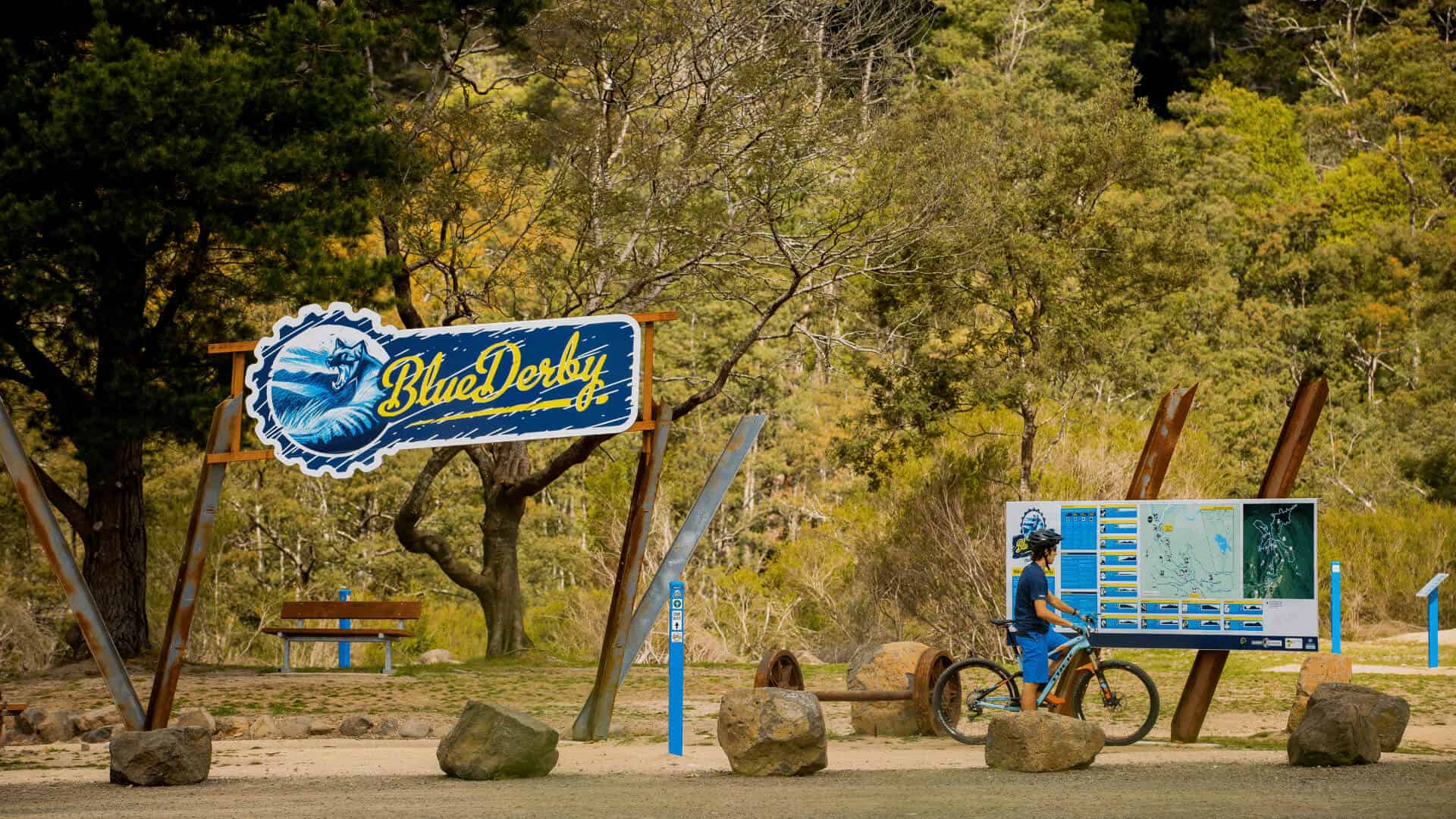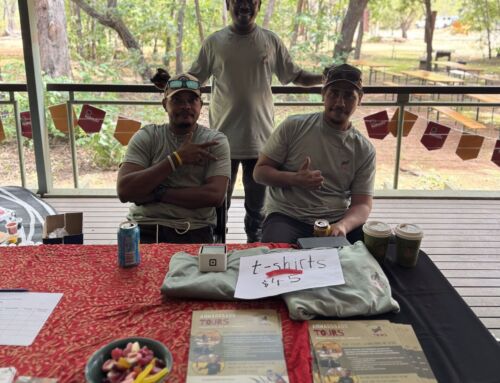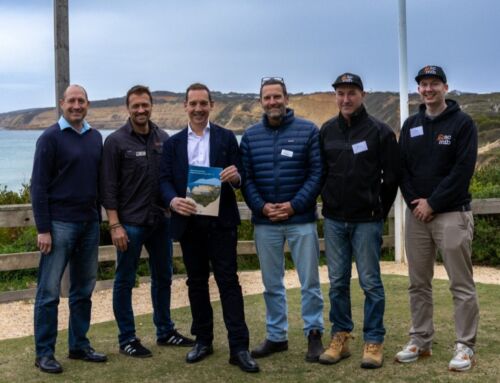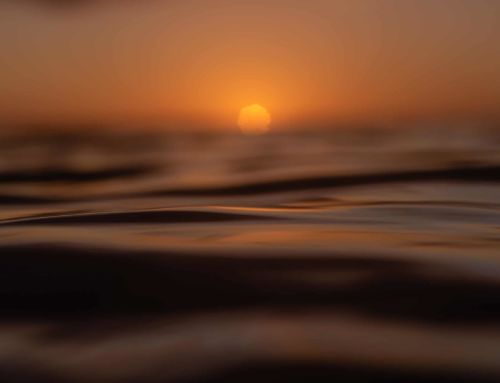When looking at success stories of mountain bike trails across Australia and overseas, Tasmania’s Blue Derby often tops the list. But this story didn’t have a happy beginning. In the 19th century, Derby was home to one of the richest tin mines in the world. The mines success made Derby home to over 3,000 people. Destroyed by floods from a burst dam in 1929 resulting in the deaths of 14 local people, later re-building efforts of the mine failed. Slowly the busy community dwindled to 173 residents.
Once known as the mining town that put Tassie on the global map, Derby was now only known as a pitstop servicing visitors travelling from Launceston to the island’s East Coast. Despite its mining history, Derby was surrounded by one of the State’s last remaining wilderness areas. Rich temperate rainforests, breathtaking landscapes, regal Eucalypt forest giants and the Blue Tier sub-alpine plateau.

In 2013, TRC became a part of the Blue Derby story. Building on from some preliminary work which started in 2005, our team investigated the potential, the demand and economic impact of mountain bike trails in Tasmania’s north east. We provided trail design concepts and guidance, with the report attracting $3.85 million towards trail development.
By 2015, 20 km of Blue Derby’s mountain bike trails opened for use – immediately reinstating the global awareness of Derby from a pitstop into a highly desired town to ride, visit, live and invest. After 12 months of use, the TRC team returned to Derby to review the impact of Stage 1 of the trail construction and forecast the economic impact of Stage 2 construction. Stage 2 would see the trails extend to 125 km, with options to suit all mountain bike skill levels. Suffice to say, the results were overwhelmingly positive with mountain biking fraternities touting the Blue Derby as becoming the best riding experience in Australia.

Image credit: Flow Nation
Fast forward to 2021, the Blue Derby now attracts over 30,000 visitors to the region each year who stay an average of 4-5 nights. Homes which once sold for $30,000 are now selling for $300,000. Old businesses are flourishing and new businesses continue to emerge. In addition to an epic riding experience, riders and their families and friends are attracted by the incredible nature, breweries and vineyards, fishing charters, floating saunas, farm gates, waterfalls and national parks, lavender farms, quad biking and guided tours. Add to this the cafes, pubs and restaurants, a range of accommodation from B & Bs through to cabins, huts, pubs and lodges, guided multi-day tours with participants staying in luxury ‘pods’ along the trail, shuttle buses, bike hire, equipment sales and repairs. The Blue Derby has also hosted the Enduro World Series, the first Australian destination to do so. It was voted by Enduro riding participants as the best ride across the World Series. This has all resulted in an estimated economic impact for the region of between $15 and $18 million dollars.[1]
As mountain biking popularity continues to rise, the Blue Derby is expected to attract over 138,000 visitors, create 51 full time jobs and add a further $6.88 million to the economy.[2]

To MTB, or not to MTB…
Let’s give you a few quick insights into the ascent of MTB…
- Amid a global pandemic, the demand for mountain biking is through the roof. The global market estimated a whopping 44.2 million ‘mountain bike units’ sold during 2020, forecast to rise to 78.5 million by 2027.[3]
- Recent estimates on mountain bike participation suggests that around one million Australians engage in mountain biking activity, ranging from beginner through to competition level.
- Cycling activity is in the top 5 of sport and recreation activities undertaken by Australians. Over 50% of Australian households have at least one working bicycle at home.[4]
- Cyclists including mountain bike riders are ‘high value’, 20% of cycling participants have an income of over $200,000 per annum.[5]
- Top reasons for undertaking a MTB experience are for health and fitness, being outside in the open air, sightseeing, relaxation, recreation and socialization – elements in strong demand post COVID-19 lockdowns.
- The national representative body, Mountain Bike Australia (MTBA) has a reported membership of 18,000, a growth of 59.7% in five years. MTBA represents 166 clubs Australia-wide.[6]
- Most MTB riders travel with their partner and children, except for advanced competition riders who ride equally with one other person OR in a group of 3-5 people.
- Adventure and nature-based tourism are forecast to become a $1.3T global tourism segment by 2023, according to the US based Adventure Travel Trade Association. Nature based tourism sectors gathering traction with audiences include:
- Glamping and luxury tented accommodation in unique and spectacular locations
- Repurposing of heritage, industrial and buildings and farm sheds
- Short walks and interpretive experiences, cycling, mountain biking in nature and wellness experiences that speak to the improvement of mind, body and spirit.[7]
- Everybody else is doing it. Serious commitment and dollars are being spent across Australia:
- Fleurieu Peninsula, South Australia mountain biking and hiking. Overall project investment: $3 million.
- WA – $20 million to service existing and new bike trails to attract more visitors to national parks and regional WA including Albany, Denmark, Mount Barker, Plantagenet, Pemberton and Margaret River.
- NT – $12 million committed towards the development of the Red Centre Adventure Ride in the jointly managed Tjoritja / West MacDonnell Ranges National Park.
- VIC – $500K for the revitalisation of the Forrest Mountain Bike Park, $500K Falls Creek Mountain Bike Park expansion, $10 million to establish Warburton as an MTB destination, $12 million Victorian state government funding of a multi-faceted 10 year plan to grow cycle tourism in the Victorian High Country.
- ACT – $375K for MTB trails across the region
- NSW – Thredbo Valley Track extension was recently opened. It now goes 61 km in total from Dead Horse Gap to Jindabyne. The 21 km extension cost $9.8 million.
- QLD – $41.4 million for Wangetti Trail construction. The first section of trail will traverse through the Macalister Ranger National Park which is located wholly within the Wet Tropics World Heritage Area. The trail will be 94 km, dual use for both walkers and mountain bike riders.
- Tasmania – $4.4 million invested in 24 trails in Georgetown, $4.5 million for a 66 km ‘stacked loop’ in St Helens and an additional 44 km linked track from Blue Tier to ocean (St Helens), private investment in a Gravity MTB park with 62 individual tracks at 120 km in length in Maydena.[8]
And we don’t need to go on about the multitude of benefits that well planned mountain bike trails can offer – economic, community, social, liveability, recreation, education, environment, heritage and culture, health and fitness to mention a few.

Why did Derby work so well? So many reasons – the compelling visitor offer of history, nature and live ‘like a local’ experiences, the perfect location and appropriate designs, the careful planning and review stages, the importance of community ownership and participation, the ability to capitalise on a trend that continues to grow and grow. The beauty of Derby is that the character and essence of place are ingrained in the trail experience. Stories of the town and region’s past are shared, there is more on offer than just a ride, and the last known wilderness area continues to proudly stand tall, protected for generations to come.
‘While a destination may have world class trails, it is the combination of trails and the overall visitor experience that creates a trail destination residents are proud of and visitors seek out.’
(TRC Tourism)
Stories like this and more will be shared at our upcoming Sustainable Trails Conference 2021 in Alice Springs. Don’t miss out on your chance to learn, share and connect with trail experts from across Australia and overseas.
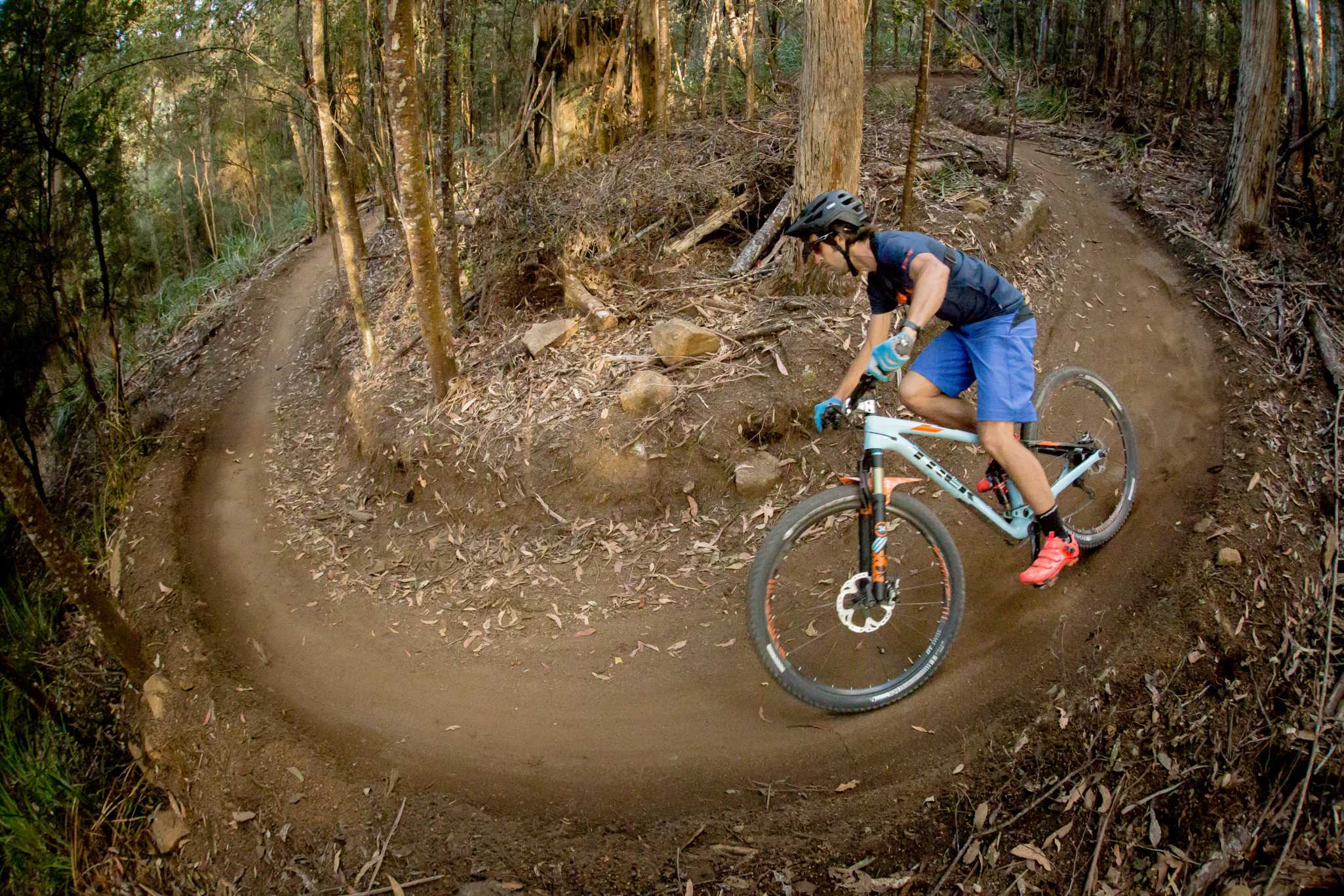
Image credit: Flow Nation
With Thanks to Blue Derby for providing images.
[1] www.ridebluederby.com.au, www.abc.net.au/news www.rdatasmania.org.au
[2] www.ridebluederby.com.au, www.abc.net.au/news www.rdatasmania.org.au
[3] Global Mountain Bike Industry (2020 to 2027) – Market Trajectory & Analytics, Research and Markets, October 2020
[4] Ausplay Cycling – State of Play 2020; Ausplay National Cycling Participation Survey 2019
[5] Ausplay Cycling – State of Play 2020; Ausplay National Cycling Participation Survey 2019
[6] MTBA Annual Report 2020
[7] https://getwherewolf.com/adventure-tourism-predictions-for-2021/
[8] https://thelatzreport.com.au/news/trade/mountain-bikings-100-million-jump/


